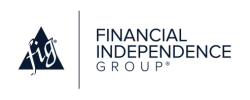Wealthy individuals and families strongly desire to integrate philanthropy into their wealth strategies. Despite this, many financial professionals overlook charitable planning discussions and miss a major opportunity to deepen relationships and provide complete financial guidance.
Why Philanthropy Matters to High-Net-Worth Clients
The landscape of high-net-worth (HNW) philanthropy has evolved considerably in recent years:
- 91% of HNW clients incorporate charitable giving into their wealth strategies
- 34% of HNW clients believe philanthropy should be discussed in their first meeting with a financial advisor
- Only 47% of HNW clients are satisfied with the philanthropic conversations they have with their advisor
These statistics, most notably, highlight a disconnect—HNW clients expect philanthropy to be part of their financial discussions, yet many advisors fail to initiate these conversations.
If you’re looking to enhance your client experience by engaging in clients’ philanthropy, consider these key strategies to position your business as a long-term wealth and legacy planning partner.
Philanthropic Giving Strategies for HNW Clients
HNW clients have access to a variety of charitable giving strategies that align with their financial, tax, and legacy goals. Here are some effective options:
#1: Donor-Advised Funds
A donor-advised fund (DAF) allows clients (or organizations) to contribute to a fund managed on their behalf by a charitable sponsoring organization. A DAF is unique in that it allows the donors to give advice and direction on asset investment and fund distribution without bearing the full burden of managing the fund.
Benefits of a DAF:
- Assets grow tax-free, and the donor can contribute as often as they’d like
- Immediate tax deductions while maintaining control over distributions
- Flexibility in charitable giving across generations
#2: Charitable Remainder Trusts
A charitable remainder trust (CRT) is a type of irrevocable trust that allows clients to donate assets to charity while retaining an income stream for themselves or their heirs.
CRTs allow for:
- Tax-efficient liquidation of highly appreciated assets
- Potential income tax deductions
- Deferred capital gains tax on donated assets
#3: Spousal Lifetime Access Trusts
A spousal lifetime access trust, or SLAT, uses an irrevocable life insurance trust (ILIT) as a foundation to own a life insurance policy while keeping assets out of a taxable estate. It provides tax-efficient wealth transfer for married couples who desire liquidity while granting access to policy cash values if required.
Benefits of a SLAT include:
- Life insurance proceeds stay outside the insured’s taxable estate
- Provides a financial safety net for the grantor’s spouse during their lifetime
- Aims to manage liquidity for estate tax obligations
#4: Standby Trusts
A standby trust strategy usually involves a survivorship life insurance policy, although single-life policies can also be utilized. This approach is ideal for married couples seeking a tax-efficient wealth transfer while retaining control over the policy and its cash value during their lifetime.
Consider standby trusts to:
- Provide access to policy cash value for financial flexibility
- Offer a cost-effective and easy set up
- Deliver liquidity efficiently when estate taxes are due
#5: Direct Charitable Gifts & Endowments
Lastly, it’s important to note that some HNW clients prefer direct gifts or establishing endowments to support specific causes or institutions. When doing so, it’s important to structure large gifts accordingly to maximize impact and tax efficiency, and ensure naming rights or donor intent is honored through formal, written agreements.
Related: Engaging HENRYs: Strategies for the Next Generation of HNW Clients
How Financial Advisors Can Guide HNW Clients in Philanthropy
To effectively support clients in their charitable giving strategies, financial advisors should integrate philanthropy into their advisory process:
#1: Start the Conversation Early
You should introduce charitable giving discussions within the first few client meetings. Open-ended questions can help uncover a client’s philanthropic vision:
- What causes or organizations are most meaningful to them?
- What impact do they hope to achieve with their wealth?
- How do they want future generations to be involved in giving?
#2: Align Philanthropy with Financial & Estate Planning
Philanthropy should not be viewed in isolation—it should complement broader financial and estate planning strategies. This includes:
- Coordinating charitable giving with income and capital gains tax strategies
- Incorporating philanthropy into wealth transfer plans to engage heirs in giving
- Structuring gifts to optimize tax benefits while maximizing impact
#3: Educate Clients on Giving Vehicles
Many clients are unaware of the full range of charitable giving options. You can be the thought leader that provides guidance on selecting the best vehicle based on:
- Level of control desired
- Tax benefits and implications
- Long-term philanthropic and family legacy goals
#4: Partner with Legal & Tax Experts
Complex charitable strategies often require coordination with attorneys and CPAs to ensure compliance and tax efficiency. Proactively building relationships with estate planning attorneys and tax professionals can offer more comprehensive support to clients.
#5: Leverage Technology & Philanthropy Platforms
New technology-driven philanthropy platforms make it easier than ever for HNW clients to manage their giving. To streamline their charitable efforts, consider introducing clients to donor-advised fund platforms, impact-tracking tools, and automated gifting solutions.
Related: Building Long-Lasting Client Bonds: 6 Estate Planning Strategies for Financial Professionals
The Role of Financial Advisors in High-Net-Worth Philanthropy
Philanthropy is more than just a tax strategy—it’s a critical component of a HNW client’s financial legacy. By proactively engaging in charitable planning discussions, you can:
- Strengthen client relationships and increase loyalty
- Differentiate their advisory practice in a competitive market
- Help clients maximize their impact while achieving financial goals
By understanding philanthropic giving strategies and taking the initiative to discuss them with clients, you’ll be able to position your business as an invaluable partner in wealth management and legacy planning.
Unlock the Full Potential of Philanthropic Giving
Helping high-net-worth clients navigate philanthropic giving requires more than just good intentions—it demands expertise in tax optimization, estate planning, and strategic wealth transfer.
Our Advanced Strategies team serves as an extension of your firm, simplifying complex case designs and ensuring your clients’ charitable goals align seamlessly with their broader financial plans. With direct access to our in-house professionals, you can enhance your credibility, uncover new planning opportunities, and provide a higher level of service without the burden of managing multiple advisors.
Connect with us today to explore how we can support your business and elevate your client relationships.



